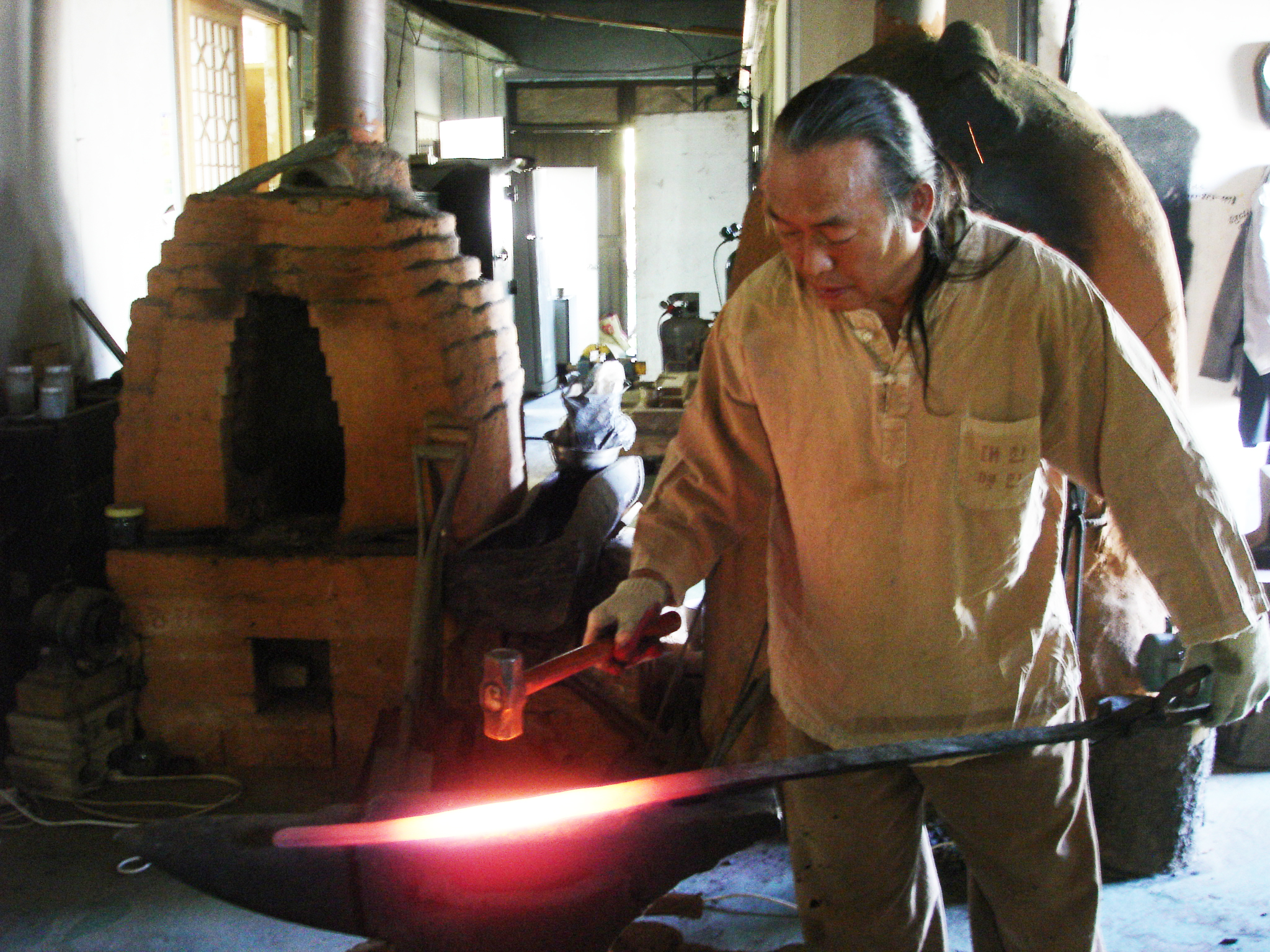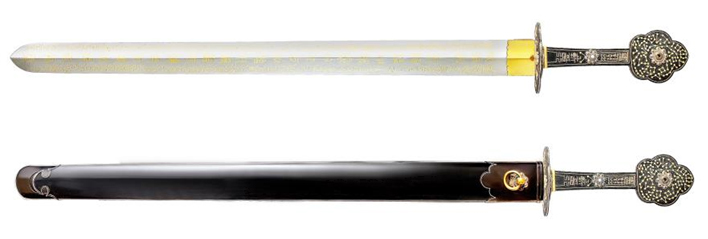Cultural heritage in Goyang
five-thousand years history
Current story of Goyang
In Beautiful Goyang-si, there are people who are designated as cultural property for their artistic value.
‘Hong Seok-hyun’, the archetype of the Korean traditional sword scene
( Gyeonggi-do Intangible Cultural Property No. 62 | Ji Jung-il : 2017.11.27 )

Hwangdo was a term referring to the ' large sword ., which was used for the weapons of the Joseon Dynasty, and for the use of wall and clothing, but has been widely used during the Joseon Dynasty. The Hwangdo Island of the Joseon Dynasty was designed to have only one blade and a waist. Although it was primarily used as a weapon, it was often used as a wall or as a burial ground in royal palaces. The dual-designate landscape has been enhanced by its graceful shape and splendid decoration, which has led to beautiful artifacts beyond simple weapons. During the Joseon Dynasty, the production of this Hwangdo was managed centrally. Gunggigam, the office responsible for the production of weapons, has a global funeral site, which specializes in the manufacturing of weapons, and created the required return from the capital, including the royal court. Gunggigam, the office that created Hwangdo Island, is believed to have been in the position of the press center near Seoul City Hall. In this sense, Hwando is a valuable cultural heritage where the spirit of national defense and national security is alive and well.
On November 27, 2017, it was designated as Gyeonggi-do Intangible Cultural Property No.62.

Saingum (reproduction of National Palace Museum of Korea)
Created in accordance with the city's signature in January 2010 (light years), the shape reproduced the human race of the National Museum of Korea's collections. On one side of the knife, the order for a 28-percent discriminator was gold. The sword was made for the magical purposes of the Wall, with the introduction of the six sons of Ommanibanbhum and the amulet for the king.
The world of revival
In the midst of indifference to this area, the succession of the land is doomed to die.
In particular, the production of Hwangdo is complicated and difficult, making it very difficult for a craftsman to master the traditional functions.
The production of Hwangdo requires as many as 20 functions such as wood, nason, paint, and joining the company, in addition to the iron handling techniques such as folding, tempered, and polishing.
During the Joseon Dynasty, skilled craftsmen from different fields worked together to create a silk bag.
But we don't have that system in place at the moment, so we have to do all this with one craftsman.
This is why there is rarely a genuine hwan revival . where a traditional sword can be reproduced on its own.
Hong Seok-hyun, the leader of the Korean era
In this situation, Hong Seok-hyun, the master of the Joseon Dynasty, is no exaggeration to say that he is the only craftsman who can perfectly recreate the Joseon Dynasty's Hwangdo Island with his own capabilities.
He has learned many of these functions through his half a century of craftsmanship and has also concentrated on the reproduction of the traditional sword.
After entering the world of craftsmanship in 1968, Hong first opened his eyes to the world of traditional stone swords in 1985. When he realized that the manufacture of the sword was something that no single function could ever do, he learned the skills needed to find and make the sword. In particular, Hong EuI-yoon, who led him to the Hwangdo Field, the commander of the Saint Swords, Jeon Yong-ha, who was the first officer of the National Police Agency, and Lim.
He has devoted his heart and soul to the reproduction of a traditional sword with the spirit of his ancestors. He studied the literature on traditional stone swords at random, and visited museums around the country to study the remaining artifacts.
With this technique of hard work and development, he has regenerated many of our traditional swords. Hwandudaedo, which was excavated from the Baekje Royal Tomb of King Munyeong, dates back to the period of the Three Kingdoms of Silla, including the restoration of the tomb of King Kim Yu-shin, Admiral Yi Sun-shin, and General Kwak Jae-woo.
In addition, there are various types of swords such as Sainngham, Ungum, Taehonggeum, and Hwangdo, which were typical and ceremonial swords of the Joseon Dynasty.
In recognition of these abilities in 2003 in Daejeon, crafts the 28th victory of the Joseon Dynasty, which restores him president the best merchant's Award for saingeom they lift, the effort.I did. Today, he is drooling thick beads of sweat in his own battle, which opened in 1993, for the perfect restoration of our traditional sword.